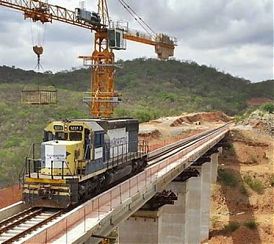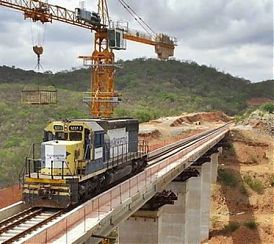INFRASTRUCTURE: EUROPE’S CHANCE TO GROW AGAIN


Europe’s infrastructure sector has a new ally: Christine Lagarde, who has been nominated to succeed Mario Draghi as president of the European Central Bank. According to an analysis by Bloomberg Intelligence, the research arm of Bloomberg, the news and information company, infrastructure was recognised by Lagarde as playing an important role in helping economies grow when she was managing director of the International Monetary Fund. And this could have an influence on decisions taken within the European Union regarding infrastructure investment at a time when the region is lagging behind Asia. As developed countries in that region invest the equivalent of 36.8% of their collective gross domestic product in the sector, the euro zone has stopped at 21%. It is a percentage that could rise when considering how Lagarde in April told the second summit of the Belt and Road Initiative in Beijing that China’s massive investments in transport infrastructure would have a considerable impact on growth. Europe is set to spend during the next 10 years $1 trillion on infrastructure, from energy to transport, according to Bloomberg Intelligence. The European Union is obviously doing its part, with $24 billion earmarked for roads, railways, air transport and water. One of its biggest initiatives is the Trans-European Transport Network (TEN-T), which will better connect the single market’s 500 million consumers.
AN OPPORTUNITY FOR EUROPE – Europe, especially thanks to cities like Paris, is returning to invest in major infrastructure projects, partly thanks to TEN-T, which is connecting the region’s railway network, many parts of which are equipped for high-speed travel. According to the Bloomberg Intelligence, this trend has been confirmed by the European Commission’s confidence indicator in the sector, which shows that business sentiment is very high. The trend is also confirmed by how the level of investment at the end of March rose by 2.7% compared with the same period last year. Euroconstruct, which publishes every year a development index on the sector, sees the market for public works growing by 1.9% this year. A good part of the drive behind this rise comes from France where mega projects are under way like the Grand Paris Express, a rail and metro network that will connect the periphery of Paris with the historic centre. In Germany, meanwhile, growth is seen stalled at 0.2%. Euroconstruct sees other countries like France, Spain, the United Kingdom, the Netherlands and Eastern European countries growing at higher rates. The Nordics, however, are slowing down.
THE ROLE OF BIG COMPANIES – 2019 will be an important year for big companies. The performance of one of the world’s leading stock market indices, the S&P 500, confirms this projection. It is up 17.8% so far this year as a result of strong fundamentals with infrastructure spending rising in several reasons, according to Bloomberg Intelligence. This year does have its risks, however. These include geopolitical tensions as the United States is embroiled in a trade spat with China and confronting Iran in the Gulf. The sector’s global players are looking with interest at China’s Belt and Road Initiative, a veritable Marshall Plan for infrastructure that could open the way for $4 trillion to $8 trillion worth of investments in the next 10 years. Big contracts have been signed in countries like Iran, Indonesia and Pakistan as China looks to reach Europe with an efficient and modern transport network to create an intercontinental highway for people and goods.
AMERICA CATCHING UP – With Asia forging ahead and Europe taking up speed, the United States seems to be at a stand still. According to a Bloomberg Intelligence forecast, U.S. spending on transport infrastructure will reach $306 billion a year for the next 10 years against $245 billion by 2016. The amount is significant, but it is deemed not to be enough to modernise fully the infrastructure network. The American Society of Civil Engineers estimates the country needs to invest as much as $454 billion a year to bridge the infrastructure gap. Of the total, nearly 60% of investments should be directed towards highways and bridges. The delay that U.S. President Donald Trump’s administration has had in executing its own infrastructure plan has been due to a lack of consensus with the opposition Democrats as well as foreign policy issues. Meanwhile, other players that could play a role in pushing the agenda forward are public-private partnerships and infrastructure funds. Bloomberg Intelligence calculates that these funds managed $85 billion worth of assets in the United States in 2018, and the amount could double at the end of this year. They could offer an answer to the needs facing the country’s infrastructure, which is in need of a big push forward to catch up with other parts of the world that are far ahead of it in terms of modernising roads, railways and other crucial infrastructure.
Source: medNews

